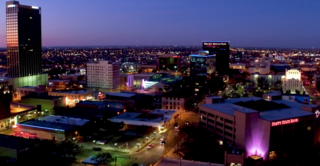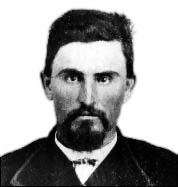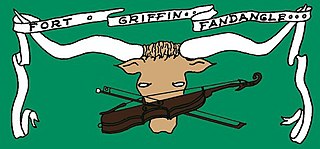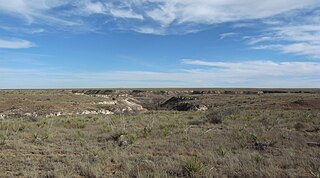
Swisher County is a county located in the U.S. state of Texas. As of the 2010 census, its population was 7,854. Its county seat is Tulia. The county was created in 1876 and later organized in 1890. It is named for James G. Swisher, a soldier of the Texas Revolution and signer of the Texas Declaration of Independence.

Lubbock is the 11th-most populous city in the U.S. state of Texas and the county seat of Lubbock County. With a population of 258,862 in 2019, the city is also the 84th-most populous in the United States. The city is in the northwestern part of the state, a region known historically and geographically as the Llano Estacado, and ecologically is part of the southern end of the High Plains, lying at the economic center of the Lubbock metropolitan area, which has a projected 2020 population of 327,424.

Canyon is a city in, and the county seat of, Randall County, Texas, United States. The population was 13,303 at the 2010 census. It is part of the Amarillo, Texas, metropolitan statistical area. Canyon is the home of West Texas A&M University and Panhandle–Plains Historical Museum, and the world-famous outdoor musical drama Texas.

Amarillo is a city in the U.S. state of Texas and the seat of Potter County. It is the 14th-most populous city in Texas and the largest city in the Texas Panhandle. A portion of the city extends into Randall County. The estimated population was 199,371 as of 2019. The Amarillo metropolitan area has an estimated population of 276,020 in four counties as of 2017. The metro population is projected to surpass 310,000 in 2020.

Palo Duro Canyon is a canyon system of the Caprock Escarpment located in the Texas Panhandle near the cities of Amarillo and Canyon. As the second-largest canyon in the United States, it is roughly 120 mi (190 km) long and has an average width of 6 mi (9.7 km), but reaches a width of 20 mi (32 km) at places. Its depth is around 820 ft (250 m), but in some locations, it increases to 1,000 ft (300 m). Palo Duro Canyon has been named "The Grand Canyon of Texas" both for its size and for its dramatic geological features, including the multicolored layers of rock and steep mesa walls similar to those in the Grand Canyon.

The Texas Panhandle is a region of the U.S. state of Texas consisting of the northernmost 26 counties in the state. The panhandle is a rectangular area bordered by New Mexico to the west and Oklahoma to the north and east. It is adjacent to the Oklahoma Panhandle. The Handbook of Texas defines the southern border of Swisher County as the southern boundary of the Texas Panhandle region.

Charles Goodnight, also known as Charlie Goodnight, was an American cattle rancher in the American West, perhaps the best known rancher in Texas. He is sometimes known as the "father of the Texas Panhandle." Essayist and historian J. Frank Dobie said that Goodnight "approached greatness more nearly than any other cowman of history." In 1955, he was inducted into the Hall of Great Westerners of the National Cowboy & Western Heritage Museum.

West Texas is a loosely defined part of the U.S. state of Texas, generally encompassing the arid and semi-arid lands west of a line drawn between the cities of Wichita Falls, Abilene, and Del Rio.

Joseph Farwell Glidden was an American businessman. He was the inventor of the modern barbed wire.
The Amarillo Globe-News is a daily newspaper in Amarillo, Texas, owned by Gannett. The newspaper is based at downtown's FirstBank Southwest Tower, but is printed at a facility in Lubbock.

The Battle of Palo Duro Canyon was a military confrontation and a significant United States victory during the Red River War. The battle occurred on September 28, 1874 when several U.S. Army regiments under Ranald S. Mackenzie attacked a large encampment of Plains Indians in Palo Duro Canyon in the Texas Panhandle.

The Caprock Escarpment is a term used in West Texas and Eastern New Mexico to describe the geographical transition point between the level High Plains of the Llano Estacado and the surrounding rolling terrain. In Texas, the escarpment stretches around 200 mi (320 km) south-southwest from the northeast corner of the Texas Panhandle near the Oklahoma border. The escarpment is especially notable, from north to south, in Briscoe, Floyd, Motley, Crosby, Dickens, Garza, and Borden Counties. In New Mexico, a prominent escarpment exists along the northernmost extension of the Llano Estacado, especially to the south of San Jon and Tucumcari, both in Quay County, New Mexico. Along the western edge of the Llano Estacado, the portion of the escarpment that stretches from Caprock to Maljamar, New Mexico, is called the Mescalero Ridge.

Palo Duro High School is a school located in the city of Amarillo, Texas, United States, and is one of four high schools in the Amarillo Independent School District. As of the 2016–17 school year, it has 2,075 students.

Prairie Dog Town Fork Red River is a sandy-braided stream about 120 mi (193 km) long, formed at the confluence of Palo Duro Creek and Tierra Blanca Creek, about 1.8 mi (2.9 km) northeast of Canyon in Randall County, Texas, and flowing east-southeastward to the Red River about 1 mi (2 km) east of the 100th meridian, 8 mi (13 km) south-southwest of Hollis, Oklahoma.

Temple Lea Houston was an American attorney and politician who served from 1885 to 1889 in the Texas State Senate. He was the last-born child of Margaret Lea Houston and Sam Houston, the first elected president of the Republic of Texas.

Lubbock Avalanche-Journal is a newspaper based in Lubbock, Texas, United States. It is owned by Gannett.

The Fort Griffin Fandangle is the oldest outdoor musical in the state of Texas. The musical takes place at an outdoor theater, called The Prairie Theatre, in Albany, Texas. Created by Robert Nail in 1938, the Fandangle has grown to a cast of over 400 and celebrates the founding of Fort Griffin and the settling of Albany. The show is attended by over 10,000 people each year. It is performed annually on Thursday, Friday, and Saturday evenings of the last two weeks in June.

Tierra Blanca Creek is an ephemeral stream about 75 mi (121 km) long, heading in Curry County, New Mexico, flowing east-northeast across northern portions of the Llano Estacado to join Palo Duro Creek to form the Prairie Dog Town Fork Red River southeast of Amarillo, Texas. Overall, Tierra Blanca Creek descends 1,050 ft (320 m) from its headwaters in Eastern New Mexico to its confluence with Palo Duro Creek at the head of Palo Duro Canyon.
The Texas Bucket List is a weekly syndicated television program hosted by Shane McAuliffe and produced by McAuliffe Productions, LLC based in College Station, Texas.
Margaret Pease Harper was an American educator, musician and civic leader. She is best known for originating the idea for the historical outdoor drama, Texas, and facilitating both its creation and the Pioneer Amphitheater where it is performed in Palo Duro Canyon.

















